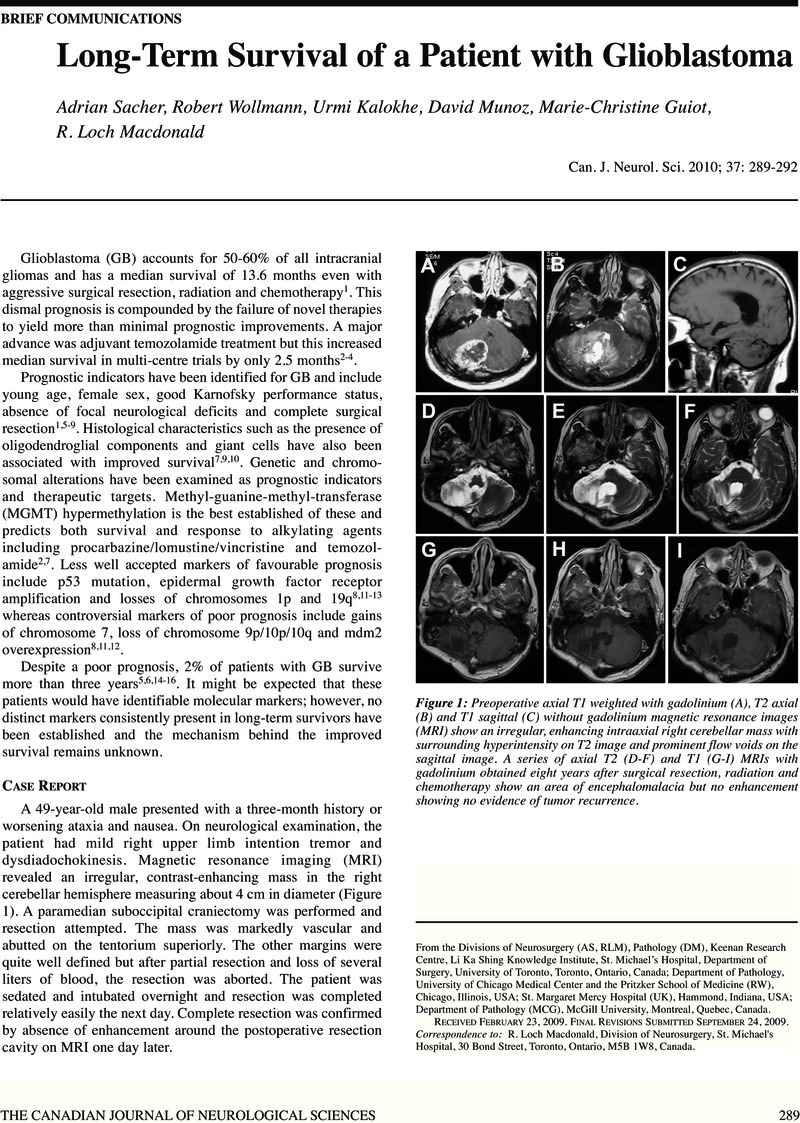Crossref Citations
This article has been cited by the following publications. This list is generated based on data provided by Crossref.
Peruzzi, Pierpaolo
and
Chiocca, E. Antonio
2010.
Treating Glioblastoma Multiforme With Electrical Fields.
World Neurosurgery,
Vol. 74,
Issue. 2-3,
p.
208.
Thumma, Sudheer R
Fairbanks, Robert K
Lamoreaux, Wayne T
Mackay, Alexander R
Demakas, John J
Cooke, Barton S
Elaimy, Ameer L
Hanson, Peter W
and
Lee, Christopher M
2012.
Effect of pretreatment clinical factors on overall survival in glioblastoma multiforme: a Surveillance Epidemiology and End Results (SEER) population analysis.
World Journal of Surgical Oncology,
Vol. 10,
Issue. 1,
Jayarama-Naidu, Roopa
and
Gallus, Evelyn
2022.
Abnormal Schwannoma-like Growth of multiple, multifocal BRAF V600E-positive Glioblastoma in the Interior Acoustic Canal with Leptomeningeal Infiltration: a case report.
Journal of Medical Case Reports,
Vol. 16,
Issue. 1,
Spoor, Jochem K. H.
den Braber, May
Dirven, Clemens M. F.
Pennycuick, Adam
Bartkova, Jirina
Bartek, Jiri
van Dis, Vera
van den Bosch, Thierry P. P.
Leenstra, Sieger
and
Venkatesan, Subramanian
2024.
Investigating chromosomal instability in long-term survivors with glioblastoma and grade 4 astrocytoma.
Frontiers in Oncology,
Vol. 13,
Issue. ,



